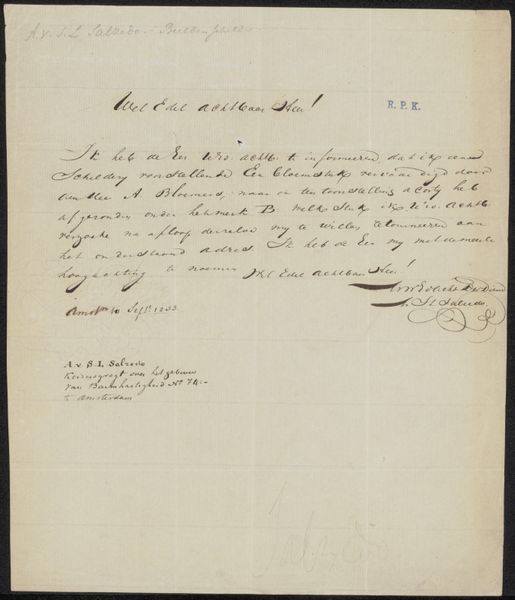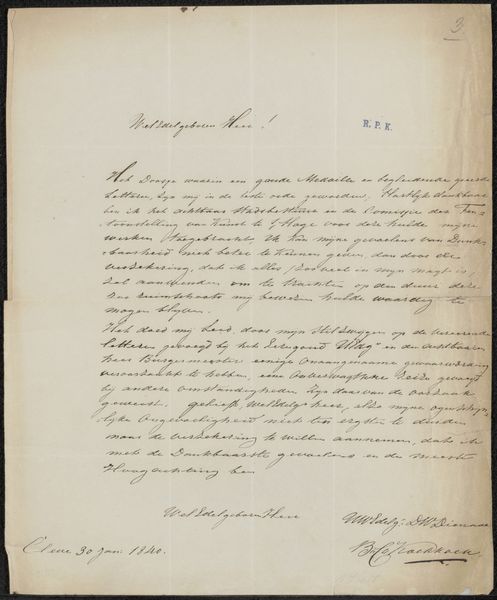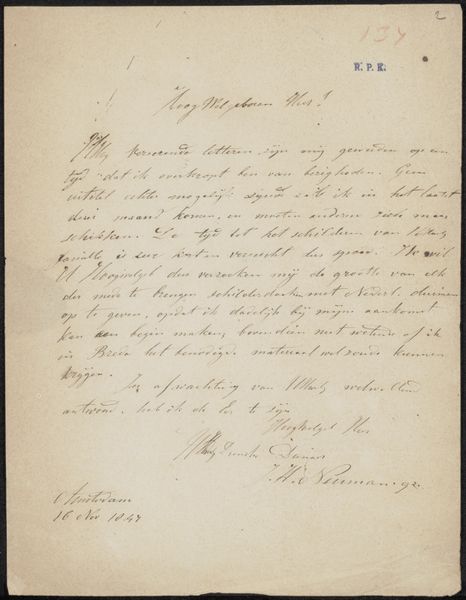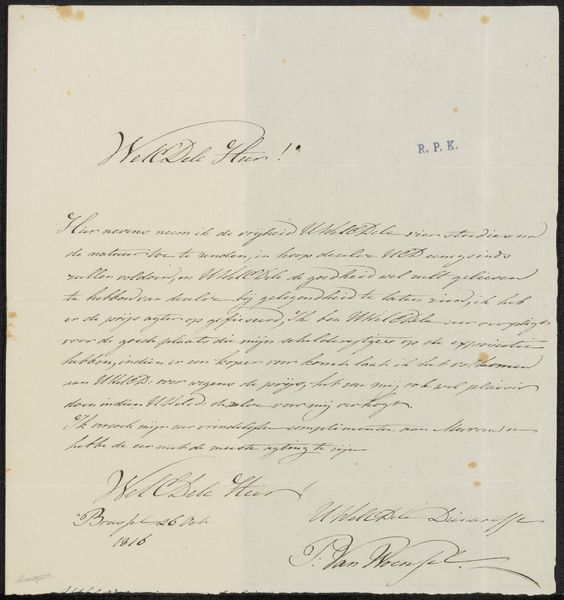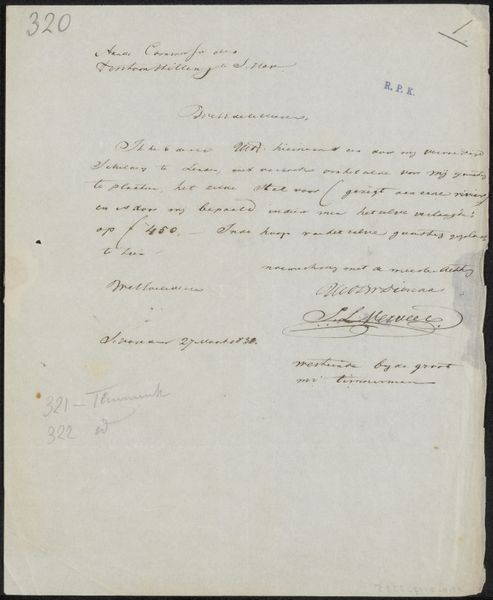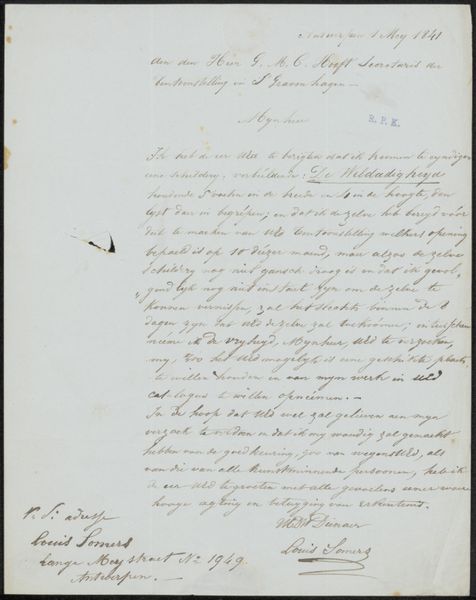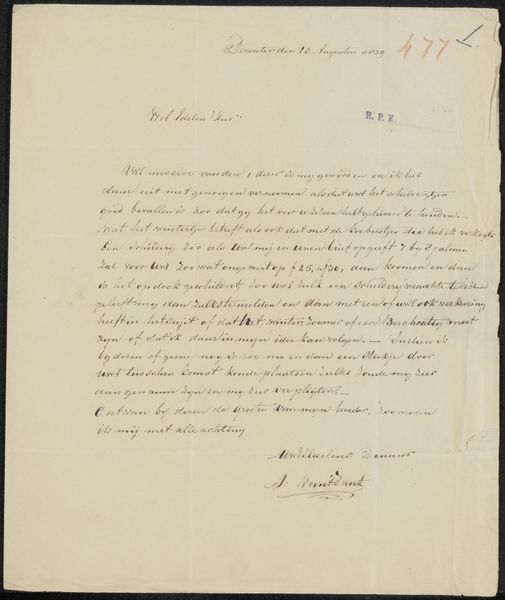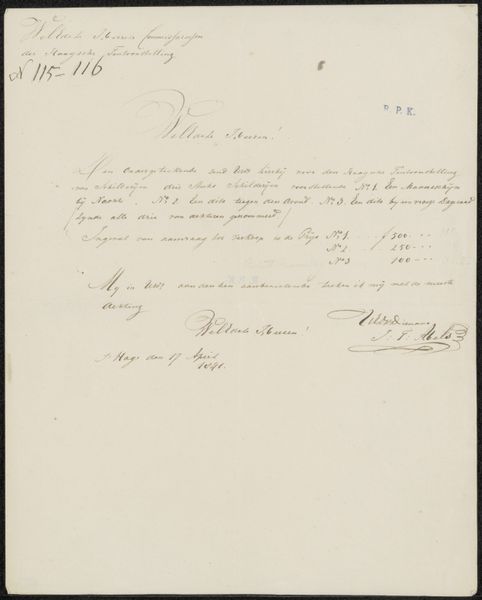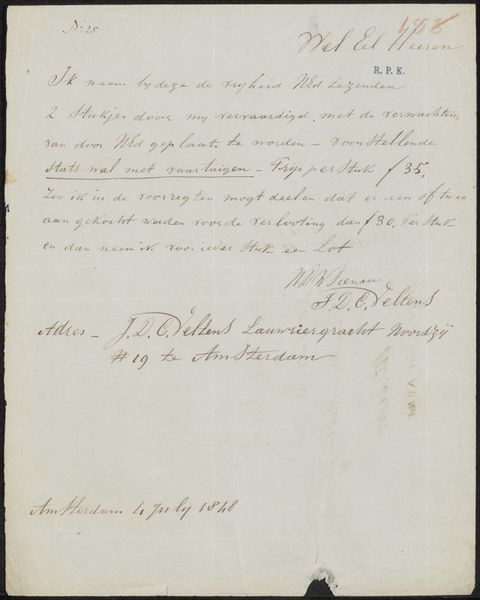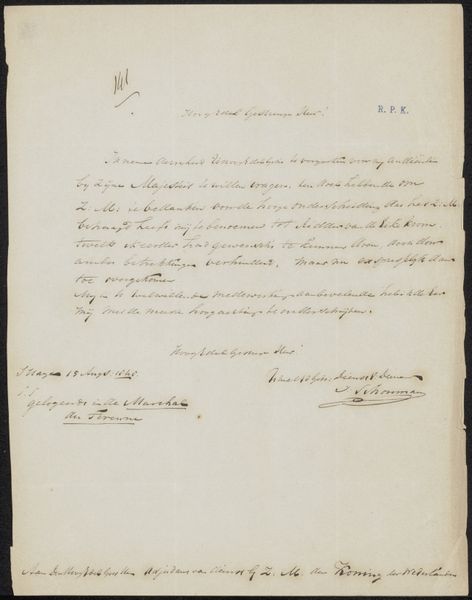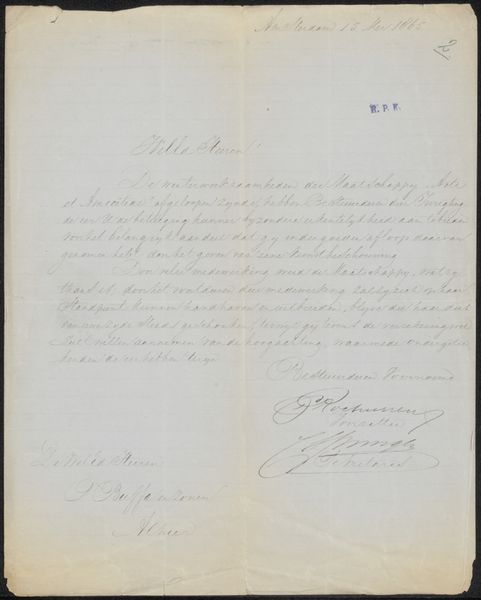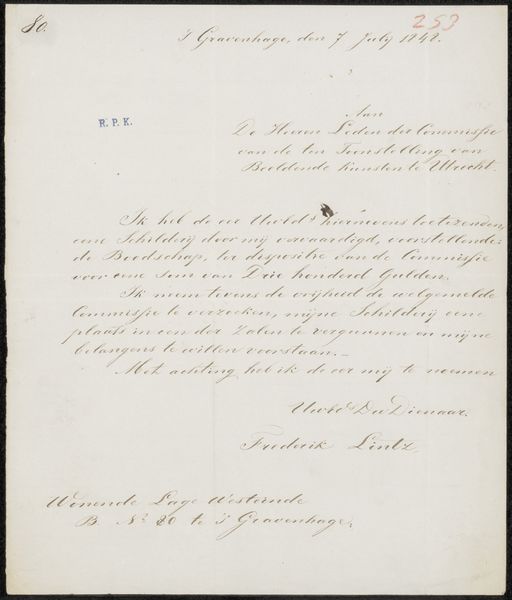
Brief aan de commissie van de Tentoonstelling van Levende Meesters in Utrecht Possibly 1848
0:00
0:00
drawing, paper, ink, pen
#
drawing
#
dutch-golden-age
#
ink paper printed
#
incomplete sketchy
#
hand drawn type
#
paper
#
personal sketchbook
#
ink
#
ink drawing experimentation
#
romanticism
#
pen-ink sketch
#
ink colored
#
pen work
#
sketchbook drawing
#
pen
#
sketchbook art
Copyright: Rijks Museum: Open Domain
Curator: This ink drawing, aptly named "Brief aan de commissie van de Tentoonstelling van Levende Meesters in Utrecht," is attributed to Johannes Josephus Destree and believed to originate around 1848. It’s a peek into an artist's world, penned on paper, held here at the Rijksmuseum. Editor: My initial feeling is one of intimacy. It’s a private correspondence, filled with beautiful handwriting, like stumbling upon a treasured diary entry. Curator: Precisely! We gain insight into the artist's ambition, evidenced by his elegant pen work. Destree essentially requests consideration for his painting at the Exhibition of Living Masters in Utrecht. You sense the socio-political structure artists navigated back then to gain recognition. Editor: The hand-drawn type feels very personal, almost vulnerable. He’s promoting his "painting" and asking that the catalog mention "Ruins by a waterfall in the Environs..." which probably carries a sense of drama given its subject. This contrasts vividly with our contemporary modes of exhibition and art-selling. Curator: That juxtaposition of grand romantic theme with the everyday act of professional networking makes the work so resonant. He also highlights that he is a student of a certain "Mr. Schelfhout", as I understand, his second attempt at such a request at the master's advice. The institutional framework surrounding artistic development shines through in such details. Editor: He is humbly pleading. It really brings out this underlying ambition for self-advancement within a particular context of that time. There’s such earnestness that seems somewhat antiquated, doesn't it? Curator: Absolutely, the materiality is important. Ink and paper were his tools, words his chosen weaponry within the competitive landscape of the Dutch art world. Also, let's observe his beautiful signature down the corner. The little symbol of his seal as well. These features add unique flair. Editor: It gives a glimpse of both personality and a determined hustle. It feels unfinished, as it’s merely a draft of thought... What survives is the core ambition and raw talent trying to reach its full bloom. Curator: True, and considering the dynamics in 19th-century exhibitions, Destree’s letter adds a poignant note to the complex tapestry of art history and the institutional contexts of creative display. Editor: Looking at this brief moment, you perceive not only ink on old paper but his yearning translated across generations into something deeply, touchingly human.
Comments
No comments
Be the first to comment and join the conversation on the ultimate creative platform.
